
Posted by DESIGN Cebu Admin
November 15, 2021
Businesses, entrepreneurs and yes, even individuals, need frameworks to help structure their workflows, operations and strategies so they are more focused, action oriented and successful. The choice of a framework depends on the business, the organizational structure or the particular aspect of a problem being solved or the process optimized.
There are quite a number of frameworks that have been included in the Business Reboot Toolkit section of this site but we have decided to add a few more in this page. We have decided not to delve too much on each model but wanted to introduce you to a few just to get you started. You can always ask Mr. Google at any time in case you have further questions. 😊
While some of these frameworks can stand on their own, many of them need to work in tandem with each other. It’s up to you to decide on what you think works best for you, your team and your enterprise.
- Systemic Framework for Creativity: Yes, creativity can be diagrammed
This model was first presented in 2015 by a team from France during the Third International Conference in Design Creativity. It proposes that creativity is a complex system composed of processes between an individual and an interacting technical and social. This system is open, interactive and produces knowledge links between the experience of individuals and new information from the environment. Thus the individuals, objects and other individuals co-evolve over time.
It is important to note that creativity (which is a potential capacity) needs to be differentiated from creation (which is a valid output). To be able to increase creative performance, one needs to constantly take into account these three domains to improve the tools, data, process and eventually the output.
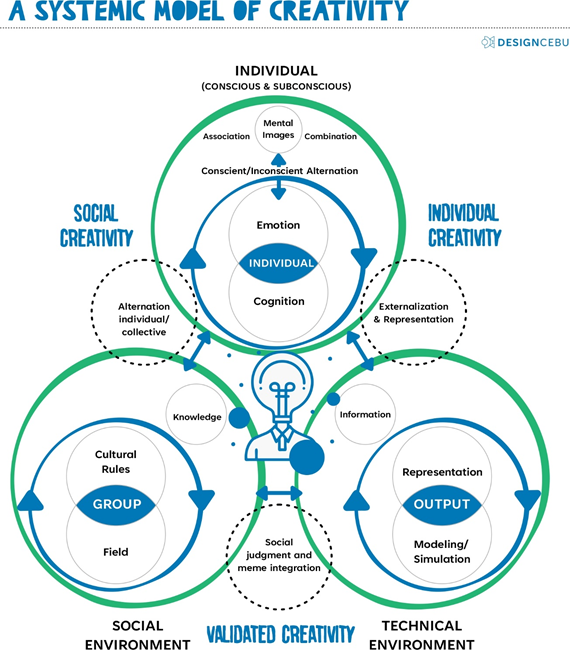
2. Design within the Creative Flow: How design fits in with other creative expressions
Contextualizing design vis-à-vis the other manifestations of creativity is very important because unlike some other creative disciplines (e.g. art, dance, and music), design needs to have some sort of utility or solve a specific problem. The motivations and the tools utilized in the creation process may be similar but the output of designers need to be tangible.

3. Design Thinking Double Loop: The basic framework everyone needs
This practical method to creating and generating value using collaborative and productive practices that anyone can learn and immediately try in any project or organization.
The top loop is the more “creative” stage – where problems are identified, questions are asked, issues are framed and innovative solutions are proposed. The bottom loop is the “getting dirty” phase where ideas meet realities upon execution when we see what works and what doesn’t.
After validation and iteration, we update our Point of View so we understand the problem or issue in better detail which allows to create even better ideas and craft more targeted solutions.
Your Point of View continues to improve as the process loops on until you find a product, service, design or opportunity that you can launch and scale. Just remember that, like with the rest of life, there will be lots of trials and errors but do not let that daunt you.
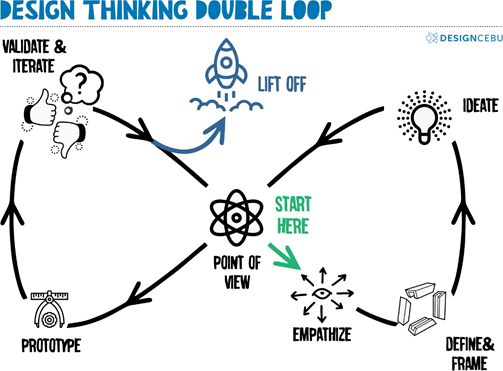
4. Hurston’s Production Think Model: How to achieve creative solutions methodically
A good complement to the Design Double Loop to really get you started in taking on a new project or assessing a particular problem is this model that was presented by Tim Hurson in book, Think Better. The model consists of six stages – each of which has specific questions to emphasize the different the different sides of the problem so the best solution can be achieved.
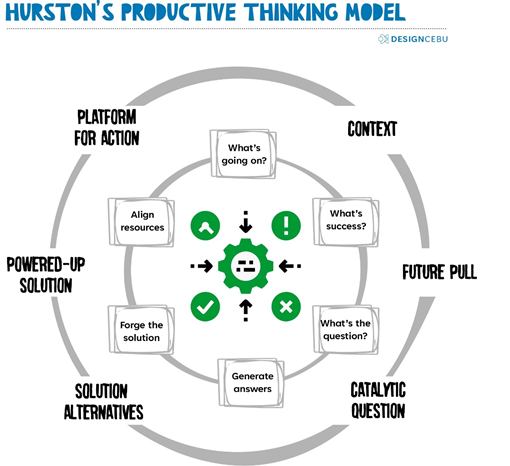
5. Business Canvas Model: A comprehensive overview of your business
This next framework is for our visitors and users who are creative entrepreneurs. Please keep in mind peeps that gone are the days of the starving artist syndrome! Today, creatives are equally as likely as geeks to be superstars in the business world. However, to launch and run successful businesses, one needs to consider all the different functions, dynamics and resources needed.
This strategic management template can be used for developing new business models or documenting existing ones and offers a visualization with elements that describe a firm’s value proposition, infrastructure, customers and finances. There are seven key elements to a successful business model that should be properly deliberated, recorded and implemented:
- Identify your specific audience.
- Establish business processes.
- Record key business resources.
- Develop a strong value proposition.
- Determine key business partners.
- Create a demand generation strategy.
- Leave room for innovation.

To start your Business Model Canvas now, please go to this site to download the template for free: https://www.businessmodelsinc.com/about-bmi/tools/business-model-canvas/
6. Product Design Framework 4.0: The next wave in design and manufacturing
As we are on the fourth industrial revolution, product designers must pivot on intelligent and smart manufacturing that fully utilizes and leverages all the new tech that is available to streamline the design, manufacturing and feedback processes.

7. Blake Mouton Managerial Grid: How to understand leadership style
Created in 1964 by Robert Blake and Jane Mouton, this grid ranks leaders along two axes: Concern for People and Concern for Task. According to this model, the ideal state is when the leader of a team rates high on both metrics so that unit functions as a Team.

8. Radical Candor: How to interact as a team
This model is about caring personally and challenging directly so team members can interact and work with full transparency. Leaders should be open to criticism from subordinates so they can improve their management skills while junior members of the team should be able to accept guidance so they can grow. This framework focuses on praise but doesn’t balk at criticism as long as you truly about your work and those you work with.
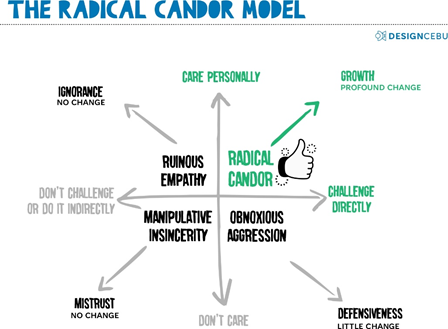
9. Johari Windows: How to reduce perception dissonance
This is a diagramming tool that was developed by psychologists Joseph Luft and Harrington Ingham in 1955. It unpacks self-awareness to help people understand their relationship with themselves and others. But it can also be applied to businesses. Most people think that everybody understands what they’re doing but in reality, there are many blind spots in both individuals and organizations.
All four quadrants deserve attention but the most critical category, especially for small businesses, is to focus on the Blind Spots area. It is important for business continuity to know how your customers perceive you instead of relying on assumptions and old knowledge. Use new tech and apps to better gauge what your customers really think about your company and work from their perspective to change their perception.
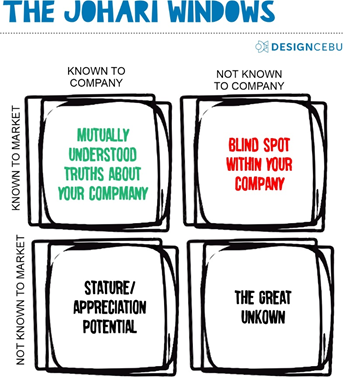
10. Weak Signals: A great tool for long-term resilienc
A weak signal is an indicator of a potentially emerging issue, that may become significant in the future. Weak signals supplement trend analysis and can be used to expand on alternate futures and prepare you and your organization for the eventuality.
When identified, synthesized and acted upon properly, one can mitigate the impact and reduce the chance of a surprise attack or by an upstart rival, say, or a destabilizing technology. Once can also leverage this foresight and take advantage of this knowledge to create more value for your company.
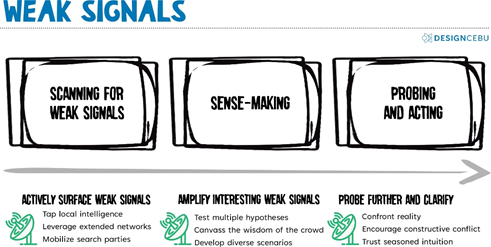
11. Six Hats Framework: Multiple personalities are needed to achieve the best results
Diverse viewpoints that challenge assumptions are always beneficial in any organization. One way to make sure this happens is to assign each person in your team to one of the six clear functions and roles so you cover all the bases.
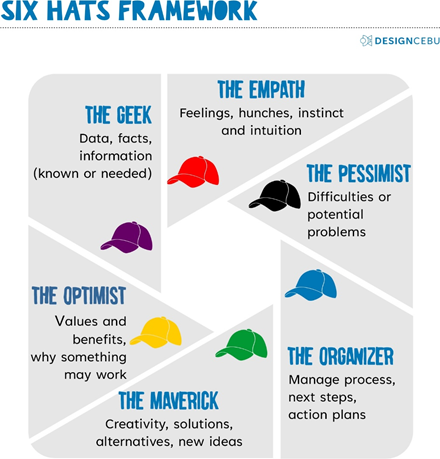
12. S/PUD BRAND ESSENCE MODEL: Your company’s reason for being
Developed by the Article Group’s strategy team, this model asks a set of 4 simple questions that may not be so easy to answer. However, if you are able to articulate and execute on them then you are well on your way to achieving your objectives.
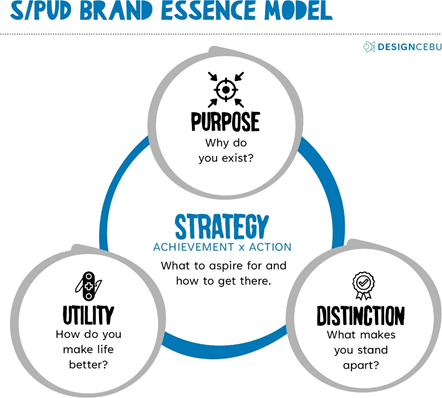
13. PACE LAYERING
Developed by Stewart Brand in connection with the Clock of the Long Now project, Pace Layers visualizes the different speeds at which various layers of society moves. Fashion, Art and Consumers act rapidly and erratically and businesses try to modulate their movements accordingly albeit at a slower pace. Changes in infrastructure take longer as they need to be constructed whereas public governance, at least in the democratic world, is based on the election cycle. Nature, by definition, takes the longest to change as evolution takes time.
It is important to acknowledge and understand these pace layers and know that they all exist in tandem.
The total effect of these different amplitudes working together is they provide corrective and stabilizing feedback throughout the system. It is however incumbent upon you to understand how you and your business fits into these pace layers so you can modulate your own pace to match or disrupt.

14. 4Ps & 4Cs: MARKETING AND CUSTOMERS: Linking products and target markets
It is no longer sufficient to develop products and services on their own without thinking about who they are designed for, what utility their utility is worth, how you will promote them, and how your customers can access them in the most convenient way.
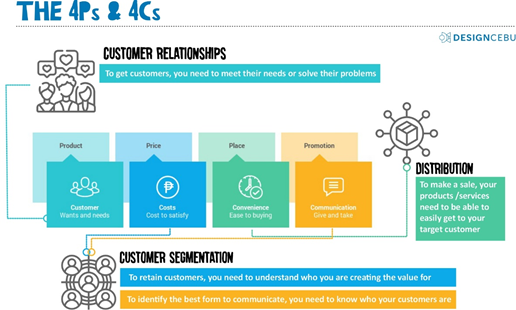
15. THE HERO’S JOURNEY:
Also known as the monomyth or an epic, this is a common template for stories that involve a hero who geos on an adventure, is victorious in a decisive crisis and returns home changed and transformed.
While not everyone is keen on leaving all the comforts and security of their particular situation, one does not also have to discard everything they know and hold dear to embark on their life-altering trip. Many smaller treks can be undertaken that can cumulatively change a person and his or her point of views. Much like the design double loop, we began with, any hero’s journey involves many trials and errors but also comes with many, many rewards.
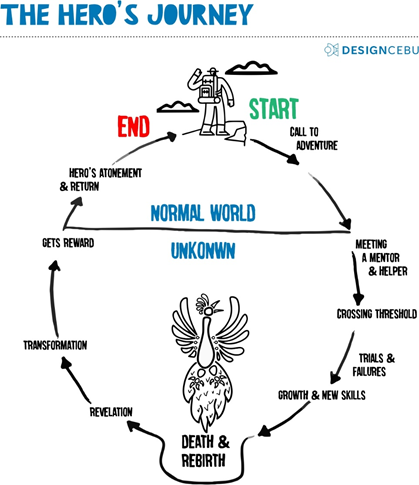
A SYSTEMIC MODEL OF CREATIVITY TO ADDRESS COMPLEXITY IN DESIGN: THE STATE OF THE ART AND PERSPECTIVES P. Bila-Deroussy1 , C. Bouchard1 and S. Diakite Kaba2 1 LCPI, ENSAM, Paris, France 2 DRIA, PSA Peugeot Citroën, Velizy-Villacoublay, France
